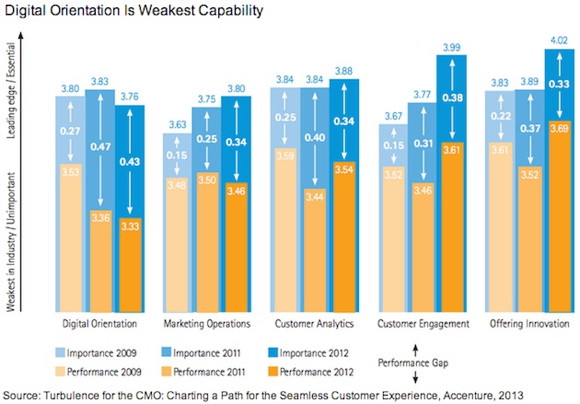Das Fernsehen kann erstaunlicherweise immer noch Zuwachsraten bei der Nutzung vorweisen. So stieg die Nutzungszeit auf immerhin 242 Minuten pro Tag pro Fernsehzuschauer an ((1) AGF/GfK, jeweils 1. Halbjahr,
ARD/ZDF Onlinestudie). Dennoch befindet sich die Branche in einer schwierigen Situation. Immer mehr Zuschauer beschäftigen sich während des Fernsehens mit einem Zweitbildschirm und die jungen Zuschauer nutzen verstärkt alternative Videoangebote und stillen ihren Hunger nach Information und Unterhaltung auf anderen Plattformen.
Denn Online Videos sind mittlerweile überall zu finden und bequem abzurufen: auf Desktop, Smartphone, Tablet und auf dem SmartTV im Wohnzimmer. In Deutschland wurden in einem Monat durchschnittlich 175 Online Videos per Viewer geschaut. Weltweit schauen 1,3 Milliarden Menschen im Durchschnitt 162 Online Videos pro Monat. Und die Nutzung findet hauptsächlich auf Youtube statt. YouTube ist immer noch die Online-Video-Plattform Nr. 1, danach folgen Facebook und andere Online-Video-Plattformen wie VEVO und Hulu oder in Deutschland die Mediatheken der Sender (
comscore Video Metrics).
Und die Nutzung steigt weltweit weiter an. Im Jahr 2013 werden Online Videos 91 Prozent des gesamten Internet Traffics ausmachen und besonders die jungen User verbringen weit mehr Zeit mit Online Videos als mit dem TV-Programm. Deshalb reibt sich auch manch Verantwortlicher in den TV-Sendern die Augen und sucht nach neuen Möglichkeiten, um mit seinen Inhalten online und mobil mitzumischen. TV-Sender haben begonnen, ihre Inhalte im Netz zu verlängern. Sie aggregieren ihren Inhalte oder bieten eigene Mediatheken oder Apps an. Sie verlängern ihre Sendungen in Facebook wie RTL2 mit ihrer Daily Soap ‘Berlin Tag & Nacht’, um mit den jungen Zuschauern im Netz interagieren zu können und sie zu jeder Tages- und Nachtzeit zu erreichen. Es scheint, dass derzeit ein regelrechter Run ins Netz stattfindet. Wer jetzt nicht drin ist und seine Inhalte adäquat zur Verfügung zu stellen weiß, wird es schwer haben, den Anschluss zu finden.
Denn die Mehrzahl der derzeit vorhandenen Online Videos stammt eben meist nicht von TV-Sendern, sondern von Usern (User Generated Content), von Markenunternehmen (Branded Entertainment) oder von neuen Produktionsgesellschaften wie
Endemol beyond oder
PutPat,
Mediakraft etc. Diese Anbieter haben sich bereits bestens mit neuen Formaten positioniert. Besonders in der jungen Zielgruppe. Ein bekanntes Beispiel ist y-titti, ein Format von Mediakraft. Ein Format, das begeistert, geteilt und millionenfach abgerufen wird. Laut Mediakraft, die auf der diesjährigen AVMD (
Audiovisual Media Days) in München zu Gast waren, verzeichnet y-titti mehr als 1,6 Millionen Abonnenten auf YouTube. Für das Gesamtnetzwerk verzeichnet Mediakraft 8,5 Millionen Unique Viewers pro Monat und bezeichnet sich selbst als Leitmedium für Jugendliche.
Trotz neuer Player und dem Run auf Online Videos schaute Gerhard Zeiler von
Turner Broadcasting System auf dem
TV-Wirkungstag dennoch deutlich optimistisch in die Zukunft. Er sagte der Gattungsmarke Fernsehen sogar eine rosige Zukunft voraus. Die Branche sei bestens positioniert, um den Herausforderungen der Zukunft gerecht zu werden. Die Gattung TV erlebe keine Revolution, sondern eine Evolution – noch nie wurde soviel Fernsehen geschaut wie heute. Und Fernsehen ist im medialen Vergleich stärker denn je und es ist immer noch die tragende Säule des Mediengeschäfts. Dennoch müssen TV-Sender reagieren, indem sie ihre Inhalte auf allen Geräten bereitstellen, in die Programmqualität und in Experimente investieren. Darüber hinaus gibt er der Branche den Tipp, sich mit einer starken Sendermarke zu präsentieren.

Audiovisual Media Days 2013
Aber ob das tatsächlich hilft, mag ich an dieser Stelle bezweifeln. Viel zu stark hat sich der Online-Video-Konsum bei Jugendlichen etabliert. In den Jugendzimmern findet man keine Fernseher mehr und die Bedeutung des TV-Geräts im Wohnzimmer wird weiterhin abnehmen, so jedenfalls Dr. Hentschel von
Goetzpartners auf den
Audiovisual Media Days in München. Werden sich die Jugendlichen tatsächlich wieder den Programmen der etablierten TV-Sender zuwenden oder werden sie ihren Bewegtbildkonsum anderweitig stillen? Und dabei ist es nicht entscheidend, auf welchem Gerät sie Bewegtbild nutzen, dies kann auch weiterhin der große Bildschirm im Wohnzimmer sein, auf dem ein Spielfilm einfach besser rüberkommt und man diesen mit Freunden oder der Familie gemeinsam genießen kann. Die Frage ist, ob der User sich sein Angebot über YouTube selbst mixt oder hierfür einen Film aus dem TV-Programm wählt? Vielleicht nutzt er auch ein OnDemand- oder PayTV-Angebot oder er schaut sich IP-basiert einen Film auf dem Fernseher an. Vielleicht baut sich der Zuschauer / User oder wie man den Bewegtbildkonsument der Zukunft auch immer nennen möchte, sein eigenes Programm aus einer Vielzahl von unterschiedlichen Angeboten zusammen und nutzt diese über alle verfügbaren Bildschirme. Aber vielleicht ist der User auch bequem und er freut sich, wenn Programmverantwortliche ihm ein individuelles Programm für den Tag zur Verfügung stellen. Das TV-Gerät wird also zur Plattform und diese Plattform wird in jedem Fall in vielen Wohnzimmern eine neue Rolle einnehmen.
TV is a geography. A Place. A Function.
TV is not just a box in the corner of the room.
Tej Rekhi, DG
TV-Sender müssen sich in diesem Wettbewerb neu positionieren und ihre Qualitäten über eine starke Sendermarke dem jungen Publikum präsentieren. Machen sie das nicht, dann überlassen sie das Feld neuen Playern. Und das kann meines Erachtens schneller passieren, als ihnen lieb ist.














